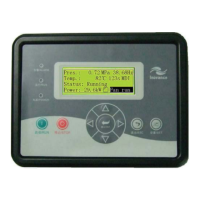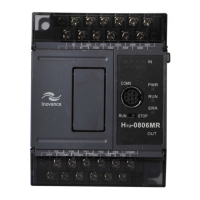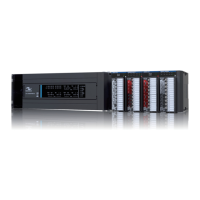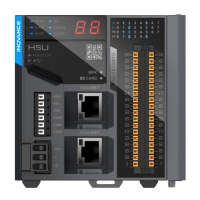5 Create and download project
36
After setting the alarm content and coil, the system will automatically associate the alarm content
with the coil. The difference from the "Alarm List Control" is that the "Alarm List Control" is only
valid on this page, while the alarm list is valid on all interfaces. "Alarm List Control" only displays
alarm information on the current page, while "Alarm List" jumps to the alarm page to display
alarm information after an alarm occurs.
The original page is restored after displaying for 5 seconds. The alarm page number is 65535 by
default. If users need to view the alarm information, they can also jump to the 65535 interface to
view the alarm information.
When the alarm control and the alarm list exist at the same time and the related components are
different, the priority of the alarm control is higher than that of the alarm list; if the related
components of the alarm control are the same as the related components of the alarm list, the
system will only display the alarm information of the alarm control. When the alarm of the alarm
control is eliminated then it analyses the alarm information in the alarm list.
4.12 Password function
The password level is divided into 4 levels: level 0 means the lowest level, level 4 is the highest-
level password. Users can enter all pages with a lower level than the current system password
but cannot enter pages with a higher level than the current system password. There is a
password level setting on each page. For example, the current password level is 1, and the
password level of this page is 2, then the user cannot enter the page. At the same time, the key
operation also has an encryption function. If the control property selects "Encryption", the control
can only be operated when the control is above level 0.
The password function uses a special register to operate the password. Divided into 4 functions
of "password level display, password lock, unlock and change password".
1) Current password level display: it is a read-only register, and the user can obtain the
current system password level through this register.
2) Password lock: can be locked from a high-level password to a low-level password. For
example, the process personnel need to modify the process parameters and enter the
system level 3, after the modification is completed, set M8311 and the current password
level becomes level 0 to prevent the operator from arbitrarily modifying the process
parameters. Note: Only password locks lower than the current level can be locked. For
example, if the current password is level 3, the system level becomes 2 if M8313 is set,
the system level becomes 1 if M8312 is set, and it is invalid if M8314 is set.
3) Unlock: D8315 is the current password input register, D8316 is the level to be unlocked,
and M8315 is the unlock confirmation function. For example, the current system
password level is level 1, and you need to enter the level 3 password system. At this
time, enter the level 3 password in D8315, enter 3 in D8316, and then set M8315. If the
password is entered correctly, the system level will automatically increase to level 3. If
the password is entered incorrectly, you can observe the current system level through
D8310 to determine whether the unlocking is successful.
4) Password change: Set the password to be modified at the corresponding D component,
and then set the corresponding M component to modify the password. If the modification
is unsuccessful, the D component will become 0. Note: The low-level password can only
be modified in the high-level state. For example, the current password level is 3. You can
modify the level-3, 2 and 1 passwords, but you cannot modify the 4 passwords.
• Example: To modify the level 2 password, enter the new password in the D8318 register, set
M8318, and set the new password to take effect.
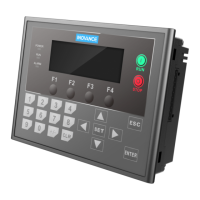
